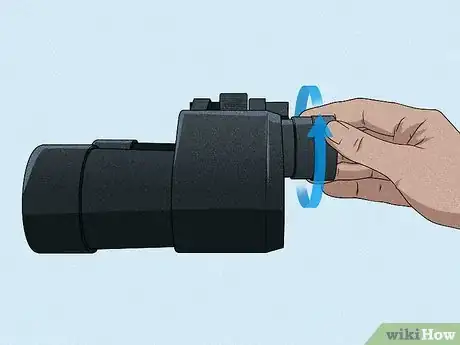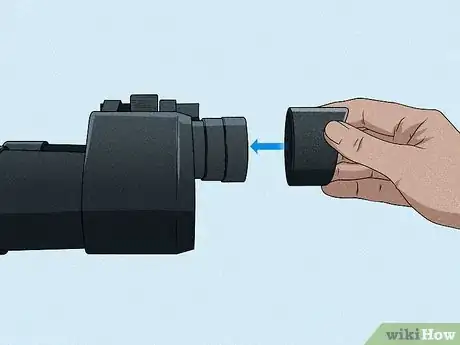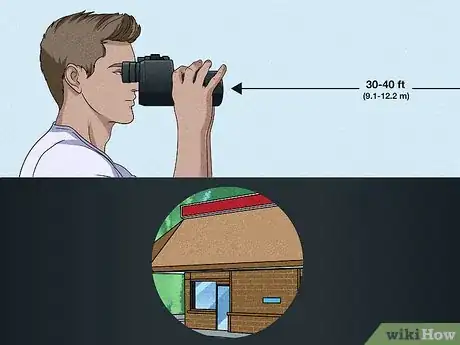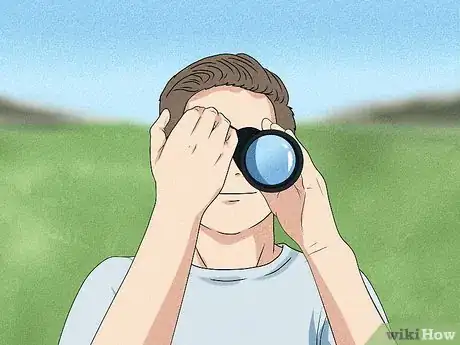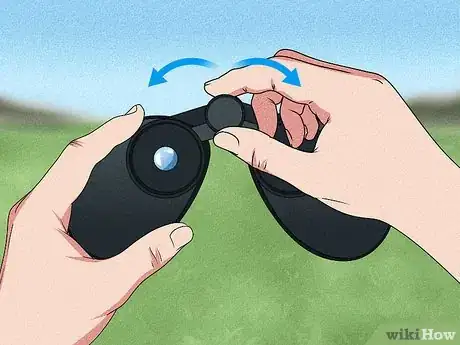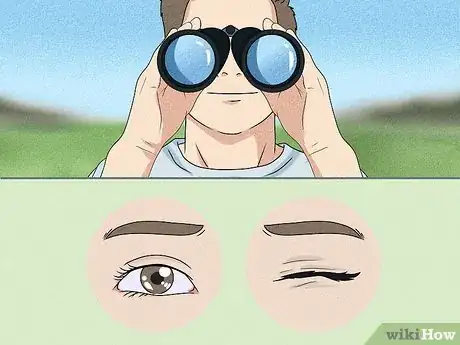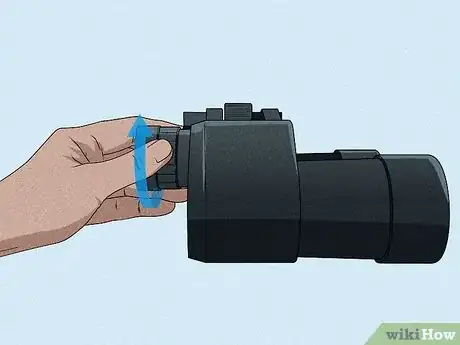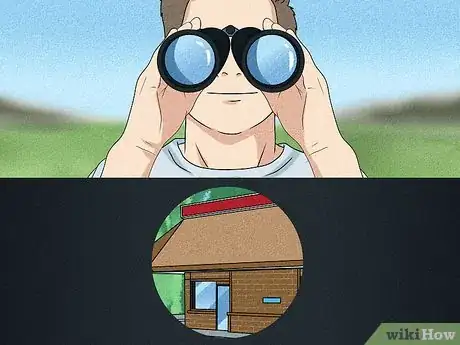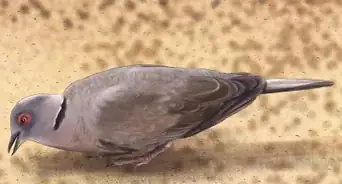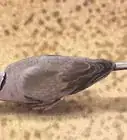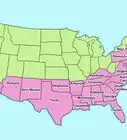This article was co-authored by Roger J. Lederer, PhD. Dr. Roger Lederer is an Ornithologist and the founder of Ornithology.com, an informative website about wild birds. Dr. Lederer has spent over 40 years teaching, studying, and writing about birds. He has traveled to over 100 countries to study birds. Dr. Lederer is an Emeritus Professor of Biological Sciences at California State University, Chico, and has been a Department Chair of Biological Sciences and Dean of the College of Natural Sciences. He has written more than 30 research papers and 10 books on birds and a textbook entitled “Ecology and Field Biology.” Dr. Lederer has consulted the BBC, National Geographic, National Public Radio, ABC News, the Guinness Book of World Records, and numerous other organizations and publications.
There are 9 references cited in this article, which can be found at the bottom of the page.
wikiHow marks an article as reader-approved once it receives enough positive feedback. In this case, 97% of readers who voted found the article helpful, earning it our reader-approved status.
This article has been viewed 115,158 times.
Seeing detail from a far distance is almost impossible without a good set of binoculars. If you’re trying to birdwatch or see something from far away, you’ll need to make sure your binoculars are correctly calibrated to your eyes. To do this, you’ll need to properly set the distance between both eyepieces. Then, you’ll adjust the focusing rings, or diopters, to make the image sharp and clear. When done correctly, amazing details will be visible from a far distance.
Steps
Adjusting the Barrels and Eyepieces
-
1Rotate the eyecup so it’s extended if you don’t wear eyeglasses. Turn the eyecups counterclockwise to raise them up from the body of the binoculars. If you wear eyeglasses, you can keep the eyecups retracted, or turn them clockwise to tighten them against the body of the binoculars.[1]
- Extending your eyecups will allow you to fit them around your eye, which will block out light you’d normally see in your peripheral vision.
- Retracted eyecups will give you a wider field of view, so you may want to turn them clockwise if you're trying to see a wider image.
-
2Attach the rubber cups to the eyepieces if you have them. Some binoculars come with a rubber cup that you can fit around the eyepiece. If yours came with one, use it for more comfortable viewing. Fit the slightly recessed end of the cups over both of the eyepieces so that they are snug and don’t slide off.[2]
- If you want to use the rubber cup but have glasses, roll the extended rubber back so that you can look through the binoculars with your glasses on.
Advertisement -
3Grip both barrels and bend the center of the binoculars to fit your eyes. The barrels are the 2 tube pieces connected to the lenses. Look through the binoculars and grip the barrels by the sides. Then, bend your binoculars up and down at the center so that both your eyes fit over the lenses. When you look through the eyepiece, you should see one circular image. If you see a double image, then you need to readjust the barrels.[3]
- The distance between everyone’s eyes differ, so you’ll need to adjust the barrels to fit your eyes so that the binoculars fit your face.
Focusing the Binoculars
-
1Hold the binoculars up to your eyes and focus on an object. Select a stationary object 30–40 feet (9.1–12.2 m) in the distance to look at. If the image is blurry when viewing it through your binoculars, it means that you have to adjust the focus.[4]
- Even if the image is clear, you may want to calibrate your binoculars to achieve an even sharper image.
-
2Cover the right lens on the binoculars and focus with your left eye. Hold the palm of your hand over the right lens to cover it. If the image is blurry when you look with your left eye, it means that you need to adjust the focusing ring, in the center of your binoculars.[5] [6]
- The focusing ring puts the object that you're looking at in focus while the diopter on the right eyepiece compensates for the differences between your left and right eye.
-
3Adjust the focusing ring in the center of the binoculars. The focusing ring is the wheel in the center of your binoculars, in between both barrels. Rotate the ring left and right until the image becomes clear in your left eye.[7]
- After you’re done focusing the left eyepiece, take your hand off the lens.
-
4Cover the left lens and focus with your right eye. Close your left eye and try to focus on the image with just your right eye. If the image isn't clear, it means you need need to adjust the diopter on the right eyepiece.[8] [9]
- If the vision in both of your eyes is the same, then you might not have to adjust the diopter on the right eyepiece.
-
5Adjust the diopter on the right eyepiece. The diopter is the wheel on the eyepiece. This helps compensate for the differences in vision in your individual eyes. Rotate the diopter until you can see the object clearly with your right eye while the left lens is still covered.[10]
- Focusing on one eye at a time will make calibrating your binoculars easier.
-
6Look through the binoculars and note the diopter settings. Look through the binoculars with both eyes. The binoculars should feel comfortable and the object should be in focus. Most binoculars will come with markings on the diopter. Take note of where both diopters are so you know where to adjust them if they get changed or someone uses your binoculars.[11]
- Once you get the correct calibration, you shouldn’t have to change it again.
- If the image is still blurry, you may need to adjust the diopter in the center of the binoculars.
Community Q&A
-
QuestionAre there binoculars I don't have to adjust, that are always right?
 Community AnswerThe reason you have to adjust is due to the object's distance that you are looking at. There are specific binoculars that don't require main focus adjustment but they are used for viewing objects far away. However, they say that if you adjust to see an object about a football field away that should be the permanent focus for the diopter adjustment.
Community AnswerThe reason you have to adjust is due to the object's distance that you are looking at. There are specific binoculars that don't require main focus adjustment but they are used for viewing objects far away. However, they say that if you adjust to see an object about a football field away that should be the permanent focus for the diopter adjustment. -
QuestionWhat if there is double vision from the binoculars? It appears as if the left and right lenses are not calibrated to give one image. How do I adjust for this?
 Community AnswerMake sure that your binoculars are adjusted correctly for the space of your eyes. If the hinge distance is too wide or too narrow for your eyes, then it is possible that this is what is causing your problem. However, it could be an internal lens issue that would need to be taken to a specialty place.
Community AnswerMake sure that your binoculars are adjusted correctly for the space of your eyes. If the hinge distance is too wide or too narrow for your eyes, then it is possible that this is what is causing your problem. However, it could be an internal lens issue that would need to be taken to a specialty place.
References
- ↑ https://youtu.be/pkPzl-VPmo4?t=38
- ↑ https://imaging.nikon.com/lineup/sportoptics/how_to/guide/binoculars/using/using_01.htm
- ↑ https://youtu.be/pkPzl-VPmo4?t=25
- ↑ https://imaging.nikon.com/lineup/sportoptics/how_to/guide/binoculars/using/using_01.htm
- ↑ Roger J. Lederer, PhD. Ornithologist. Expert Interview. 29 April 2021.
- ↑ https://youtu.be/pkPzl-VPmo4?t=70
- ↑ https://youtu.be/nmhJ_FkeH6s?t=51
- ↑ Roger J. Lederer, PhD. Ornithologist. Expert Interview. 29 April 2021.
- ↑ https://youtu.be/04oEOrxG24c?t=134
About This Article
To calibrate your binoculars, first rotate the eyecups counterclockwise so they’ll fit properly around your eyes. Then, hold up the binoculars to your face and find a stationary object in the distance to look at. Once you find an object, cover the right lens with the palm of your hand to check to see if its in focus. If it’s blurry, you’ll need to adjust the focus ring in the center of the binoculars. After you’ve focused the image, uncover the right lens of the binoculars and cover the left lens instead. If the image is blurry now, you should adjust the diopter on the right eyepiece, which compensates for the differences between your left and right eye. To learn how to adjust your binoculars if you have glasses, read on!
